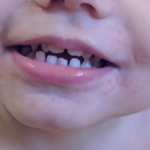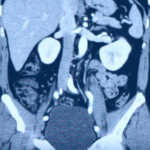Dried blood in ear is often eliminated along with ear discharge. The drainage may consist of dried blood and fluid, wax, and/or pus.
Dried blood in ear can occur due to serious causes and hence it is important for all patients to seek immediate medical attention.
Symptoms
Dried blood in ear may be accompanied by the below listed signs and symptoms:
- Ringing or buzzing in the ear
- Pain in ear
- Headache
- Fever
- Temporary/partial loss of hearing
- Balance problems, confusion
- Facial weakness
- Drowsiness
- The ear discharge may be smelly
Patients who experience the below listed symptoms along with dried blood in ear must immediately consult a doctor as it can be indicative of a life-threatening condition:
- Change in levels of consciousness
- Excessive bleeding from ear
- Discharge of blood from nose
- Excessive vomiting
- Dizziness or fainting
- Abnormal size of pupils
- Loss of ability to track motion with the eyes
- Exhaustion, sluggishness, or lethargy
- Bleeding below the skin that encircles the eyes
Causes of dried blood in ear
Some of the common causes of dried blood in ear are as follows:
- Ruptured eardrum: One of the most common causes of dried blood in ear is a tear or a rip in the eardrum. It can be caused by very loud noises, entry of foreign body into the ear, sudden air pressure changes, and/or infections. It may however be noted that ruptured eardrum may not always cause bleeding in ear; if the problem is minor, then it tends to heal with time without any medical treatment.
- Hemorrhagic fever: Of late, viral hemorrhagic fevers have occurred all over the world in large numbers. During the later phases of this illness, blood vessels get broken down by the viruses which may result in bleeding from different opening in the body, including the nose, mouth, anus, and ears. Hemorrhagic fever if usually not life-threatening, but a few like Ebola have an extremely high mortality rate of 90 percent.
- Foreign item in ear: Any item that is not designed to be naturally present in a place is referred to as a foreign object. When it comes to the ear, a foreign body can refer to a matchstick, a cotton swab, pencil lead tips, pens, etc. With children, beads, small toys, or food may also enter the ear and cause problems. Bleeding from ear may not always be the outcome of a foreign body presence in the ear; dried blood in ear only occurs when the object tears the ear canal’s skin lining or causes a break in the eardrum.
- Fracture of skull: When the base of the skull suffers from a fracture, then it may result in bleeding and dried blood in ear. In most cases there is drainage of only cerebrospinal fluid from the nose or the ear. Blood will be visible only if blood vessels have ruptured, resulting in mixture of blood with the cerebrospinal fluid which get discharged from the ear. This situation is rare and typically happens in cases of extreme head trauma.
- Malignant otitis media: Otitis media refers to the outer ear and its infection is called swimmer’s ear; it is generally not accompanied by bleeding from ear. A serious form of swimmers ear which may migrate to the skull bones is referred to as malignant otitis exerna. In this condition, the affected region is at increased risk to bleeding even with the most minor injury or irritation which may be caused due to insertion of a foreign item into the ear canal.
- Otic polyp: A non-malignant growth on skin of the eardrum or the external ear canal is known as an aural or otic polyp. It is often associated with chronic ear infection and typically occurs due to prolonged irritation of the area. The polyp usually does not bleed, but injury from foreign objects can result in bleeding and dried blood in ear. Otic polyps are different from a cholesteatoma.
- Disseminated Intravascular Coagulation/DIC: It is a severe condition marked by abnormal clotting of blood and subsequent reversal, thereby resulting in excessive bleeding even in cases of minor trauma or injury. In severe instances of DIC, bleeding may occur even in the absence of injury. The condition may occur with extensive inflammation, cancer, and some types of infections. DIC is a rare case of dried blood in ear.
Treatment of dried blood in ear
All cases of dried blood in ear need to be immediately checked by a doctor as it may be indicative of a severe life-threatening condition. The doctor will offer relevant treatment after diagnosis of the underlying cause.
If dried blood in ear has a minor cause, then patients may follow the below listed self-care measures and home remedies to alleviate the symptoms:
- Do not use products like oil or water to clean dried blood from ear
- Restrict the usage of ear buds till the condition heals completely
- Do not insert any foreign object into the ear, at all, and even in the outer ear
- Use ear plugs when swimming or showering or when in water
- Steaming can help alleviate clogged dried fluid and blood present in the
Eustachian tube. - Application of heat on the affected ear via a warm compress can help find relief from pain
- White vinegar has antibacterial qualities. Combine it with rubbing alcohol to clean any mild infection and prevent fluid buildup inside the ear
- Infections and inflammation can be eased with breast milk, which has natural healing properties
- Basil has antibiotic properties and it can be used to prevent infection, treat ear bleeding and abnormal ear discharge, and manage ear pain.
- Onion juice can be used to treat infections of the middle ear. Heat onion juice, let it cool down, apply 2 to 3 drops into the affected ear, and tilt head to drain the juice after about 5 minutes. Repeat the remedy 2 to 3 times a day.

